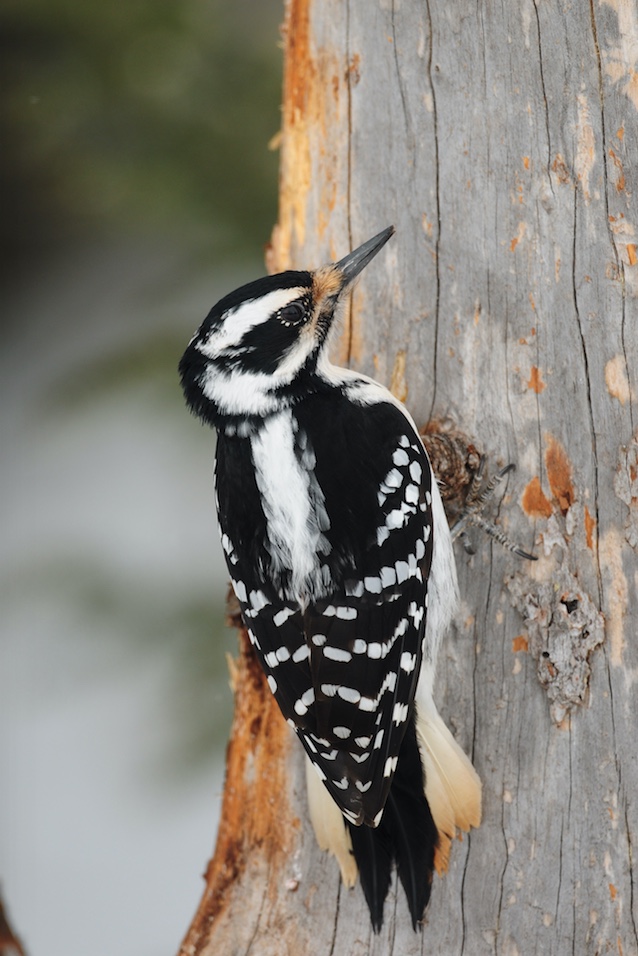Small holes in wooden siding or shingles are often caused by woodpeckers.
Drumming holes: Woodpeckers can’t sing, but they still need to attract a mate and let other woodpeckers know a territory is taken. So they hammer on trees, poles, or buildings with their bills, which makes a loud, distinct drumming sound. This behavior is most common in the early spring but can continue throughout the nesting season (spring and summer). The holes are typically small, shallow holes or dents found clustered in wooden siding, usually along the corners of the building, along the fascia or trim boards.
Roosting or nesting holes: Houses with natural wood or dark stain, particularly those that are near wooded areas, are prone to having woodpeckers drill nesting or roosting holes. Nesting holes are usually made in April or May. Roosting holes are usually drilled in late summer or fall so that the woodpecker will have a warm place to stay during the winter. The woodpecker will drill through the siding, sheathing, and plywood layers until it reaches the insulation. There the woodpecker hollows out a small space in the insulation to use as the nest or roosting site. Often the first hole doesn’t work out, and the woodpecker may drill several holes in the building until finding just the right spot to raise young or hunker down during the cold winter months.
Foraging holes: Buildings with wooden siding or wooden shakes or shingles often have insects hiding underneath the wood. Hungry woodpeckers will drill horizontal or vertical rows of holes looking for these insects.
The woodpecker page has information about damage prevention and control measures. And the Cornell Lab of Ornithology has information about types of woodpecker damage specific to siding, with photos and more information on control measures.

The Wildlife Illinois website was authorized by the Illinois Department of Natural Resources (IDNR) in partial fulfillment of project W-147-T. The website was developed by the National Great Rivers Research and Education Center, 2wav, and the IDNR in partnership with the United States Department of Agriculture Animal and Plant Health Inspection Service Wildlife Services and University of Illinois Extension to provide research-based information about how to coexist with Illinois wildlife.